Virtual Tour of the Hortus Botanicus in Amsterdam
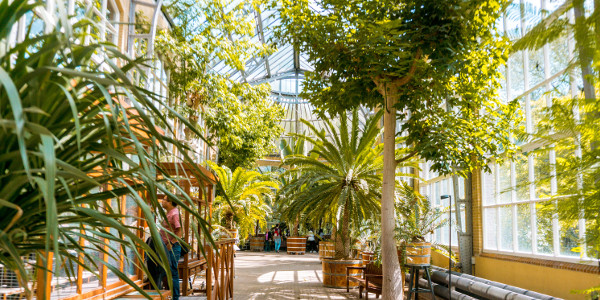
The Hortus Botanicus is Amsterdam’s botanical garden. Unfortunately, the garden is currently closed due to precautions taken by the Dutch government in the fight against the pandemic. The Hortus came up with an amazing idea: they’re doing virtual tours on their website! Every week, Reinout Havinga (head of garden & collection) takes us with him on a tour around the botanical garden. We couldn’t wait to virtually go with him!
Read more: Virtual Tour of the Tulip Fields in the Netherlands
The Hortus Botanicus
Gardens
We visited the Hortus Botanicus once in summer, but every season the garden is different. The Hortus features three gardens. In the Snippendaal Garden, you can find different kinds of medicinal plants. The plants in this garden were being used in the Hortus Medicus in 1646, the predecessor of the Hortus Botanicus. The Semicircle is a systematic garden. In this garden, species that are similar to each other, grow close to each other and species that have little in common, grow far apart from each other. The third garden is the large pond, which is surrounded by dune perch, Gunnera and a collection of Rhododendron.
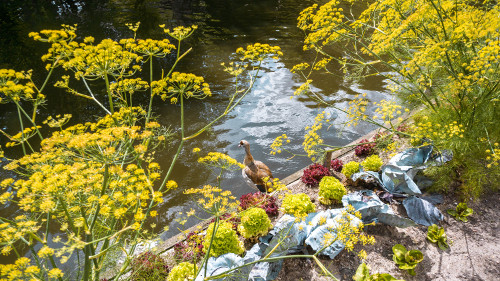
Greenhouses
Besides the gardens, there are three greenhouses you can visit in the Hortus. The Three Climates Greenhouse, consists of the subtropics, the desert and the tropics. This greenhouse was designed in 1993 as a huge and modern construction. It’s amazing to walk among the plants through the different climates. Especially the cactus collection in the desert climate drew our attention.

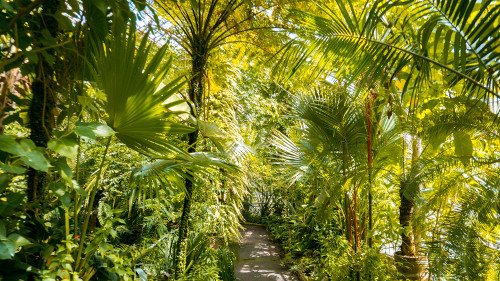
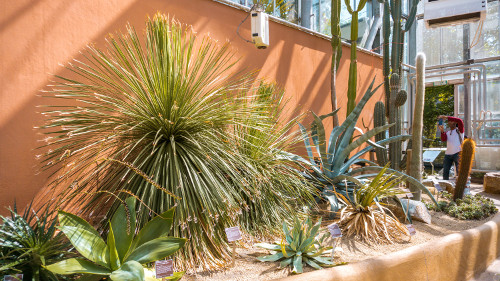
The Palm Greenhouse houses a collection of palms. In summer, most of these palms are moved outside. In this greenhouse, you can find a 350-year old plant: the Encephalartos Altensteinii. Can you imagine a plant being 350 years old!?
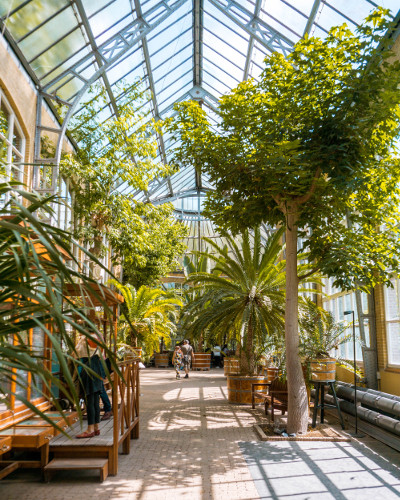
The Palm Greenhouse was designed in 1911 and is a protected monument. The building is absolutely beautiful. You can even climb the stairs and walk among the tall palms.
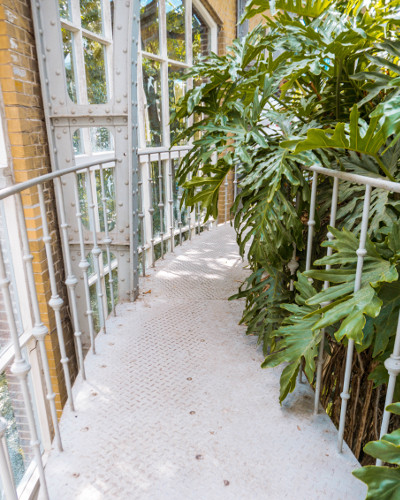

Another very interesting greenhouse is the Butterfly Greenhouse. Hundreds of tropical butterflies fly around in here. The plants that grow in this greenhouse are either eaten by the butterflies or used for fibre and medicine. It’s such an interesting place to walk around and it’s amazing to see so many different kinds of butterflies.
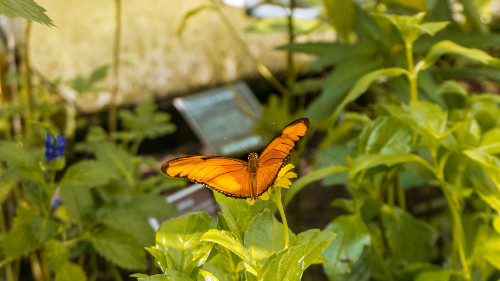
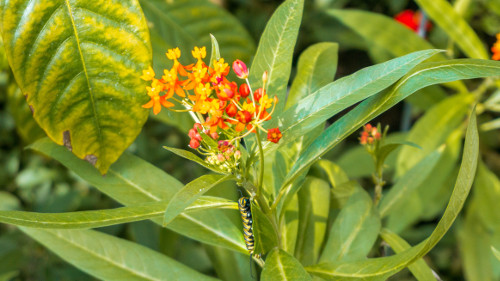
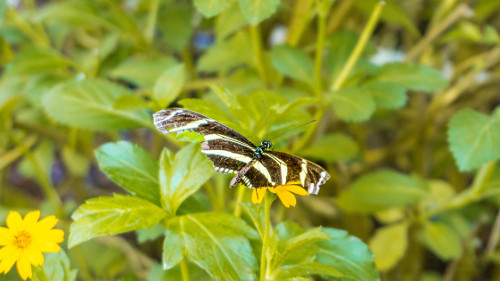
Virtual Tour of the Hortus Botanicus
When we discovered the Hortus Botanicus were doing virtual tours, we immediately got excited and couldn’t wait to do the tour ourselves. Currently, there are six episodes of the tour online. You can find the episodes on the website of the Hortus Botanicus. All episodes are subtitled in English.
In the first episode, we’re looking at the magnolias in the Hortus Botanicus. There are many different species of the magnolia tree and every species has its own blooming period. A few of the magnolias in the Hortus are blooming in the video tour. Reinout Havinga shows us the star magnolia, a species we’ve never seen before but looks beautiful. We’re told that the magnolia originates from China and North America. He also tells us that it’s common for plant species to grow in both East Asia and Northeastern America as both areas were connected in the past. So interesting!
The second episode shows us the tulips in the Hortus Botanicus. Every spring, the Hortus displays around 40 tulip species. Even though the Netherlands is famous because of its tulip fields, tulips don’t actually originate from the Netherlands. We’re told that some tulip species originate from Turkey but most species originate from Central Asia.
In the third episode, we’re looking at the development from spring to summer and when the plants are growing in the Hortus. Plants need light to grow and in shady places, it’s important that plants grow at the right time. The plants that grow on the ground are the first plants to do so. Bushes like hazel are second. When the hazels are full of leaves, there’s a lot less light at the ground which makes it hard for the ground plants to grow and they will slowly recede. Trees are the last ones to grow their leaves. It’s very interesting to see in the video that all ground plants are green and blooming, while the hazel has just started to grow its leaves. The trees don’t have any leaves at all yet.
In the fourth episode we’re looking at the blooming wisteria. The wisteria is one of our favorite plants and the flowers are just beautiful. We’re told that the wisteria is related to the bean and that it’s actually a huge beanstalk. There are a few species of wisteria. The Chinese and Japanese wisterias are most common in the Netherlands. Both wisterias grow in the Hortus. The main difference between the Chinese and Japanese wisteria is that the Japanese wisteria grows clockwise and the Chinese wisteria grows counterclockwise. We’re learning so many interesting things!
The fifth episode is dedicated to the elm. There are no elms in the Hortus, but just outside the Hortus there are plenty of elms. Reinout tells us that Amsterdam is the city of elms. He shows us that the characteristic of the elm is an uneven leaf base. The leaf isn’t symmetrical. Another characteristic of an elm leave is a serrated leaf edge. Now we know exactly which trees are elms and which ones aren’t.
In the sixth episode we’re looking at epiphytes in the tropical greenhouse of the Hortus. Epiphytes is a term for plants that grow on something, often on other plants. They often grow in the treetops so they’re close to the light. The roots of epiphystes are in the trees, but they aren’t parasites. Epiphytes don’t extract nutrients from the plant they grow on, but they provide their own nutrition. Reinout shows us the bromelia, whose leaves are shaped like cups with which it catches rainwater. We’re told that epiphytes are actually very small ecosystems with their own nutritional cycle.
We learned so many interesting things in the virtual tour of the Hortus Botanicus! We can’t wait to visit the garden in real life again, but these video tours are absolutely great for when real life visits aren’t possible. We might even have learned more about the plants in the Hortus in these videos than we did during our visit. Check out the website of the Hortus Botanicus for more information about the botanical garden in Amsterdam.
We hope you enjoyed this virtual tour of the Hortus Botanicus. Is visiting Amsterdam on your bucket list? Let us know in the comments below!
Be sure to check out:
- our daily life updates on Instagram
- our Stuck at Home vlog series on YouTube
- our TikTok
More Self-Isolation
Tulip Fields in the Netherlands - A Photo Guide With Locations
Fun Things To Do at Home During Self-Isolation
Flowers in Europe: Our Favorite Places to See Blossoms and Blooms

